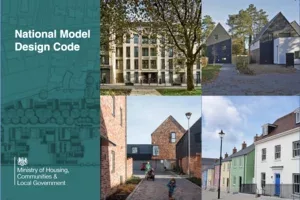The Government is proposing changes to the National Planning Policy Framework to help put a ‘greater emphasis’ on beauty and place-making and to ensure all new streets are lined with trees.
This is in response to the Building Better, Building Beautiful Commission report, meaning local communities will now be ‘at the heart’ of plans to make sure new developments in their area are well-designed.
Government has also published a new draft national design code that provides a checklist of design principles to consider for new developments, such as street character, building type, façade, and the requirements that address wellbeing and environmental impact, which councils can use as a foundation for their own local design codes.
Under the new proposals government also wants to; encourage all councils to publish their unique design code, so residents have a real say in the design of new developments in their area and create an ‘Office for Place’ within the next year, which will support local communities to turn their designs into the standard for all new buildings in their area.
It will also open a new Community Housing Fund to support community-based organisations to bring forward local housebuilding projects for the £11.5 billion Affordable Homes Programme, backed by £4 million of support for local plan. Plans also include the doubling of available funding for areas under the “local heritage listing – monuments men” campaign, with up to £1.5 million now available for communities to nominate local heritage sites including historical buildings or modern architecture, art and memorials for inclusion in their council’s local heritage list.
Taken together, these measures will help the country to Build Back Better and ensure that current and new residents alike will benefit from beautiful homes in well-designed neighbourhoods as we recover from this pandemic, said the Ministry of Housing, Communities and Local Government.
Greater concentration will now be placed on the quality, design and the environment in planning than ever before, with the local community fully involved in how they want new developments to look and feel. For example, the proposed changes to the National Planning Policy Framework will set an expectation that good quality design will be approved while poor quality will be rejected, and includes a commitment to ensure that all streets are lined with trees.
The measures mean the word ‘beauty’ will be specifically included in planning rules for the first time since the system was created in 1947 – going back to a previous time when there was a greater emphasis on whether a building was considered attractive to local people.
Housing Secretary Rt Hon Robert Jenrick MP said: “We should aspire to pass on our heritage to our successors, not depleted but enhanced. In order to do that, we need to bring about a profound and lasting change in the buildings that we build, which is one of the reasons we are placing a greater emphasis on locally popular design, quality and access to nature, through our national planning policies and introducing the National Model Design Codes.
“These will enable local people to set the rules for what developments in their area should look like, ensuring that they reflect and enhance their surroundings and preserve our local character and identity. Instead of developers forcing plans on locals, they will need to adapt to proposals from local people, ensuring that current and new residents alike will benefit from beautiful homes in well-designed neighbourhoods.”
The government is also putting support in place for councils and communities to help them set expectations of design quality in their area. This includes the creation of an ‘Office for Place’ within the next year which will pioneer design and beauty within the planning system. The new organisation will draw on Britain’s world-class design expertise to support communities to turn their visions of beautiful design into local standards that all new buildings will be required to meet.
An interim Office for Place will be established in the department immediately with a transition board chaired by Nicholas Boys Smith, tasked with considering what form the organisation should take, informed by responses to the planning reform consultation.
This team will this year be piloting the National Model Design Code with 20 communities and empowering local authorities to demand beauty, design quality and place-making, through training on the principles outlined in the National Model Design Code.
Expressions of interest are now open for the first 10 councils to sign up, with these to receive a share of an initial £500,000. The proposals are now out for consultation for a period of 8 weeks.
The government is also relaunching the Community Housing Fund, making £4 million available to help community-based organisations bid for funds to support them to prepare bids for the £11.5 billion Affordable Homes Programme. This programme is the largest investment in affordable housing in a decade and will provide up to 180,000 new homes across the country, should economic conditions allow.



























